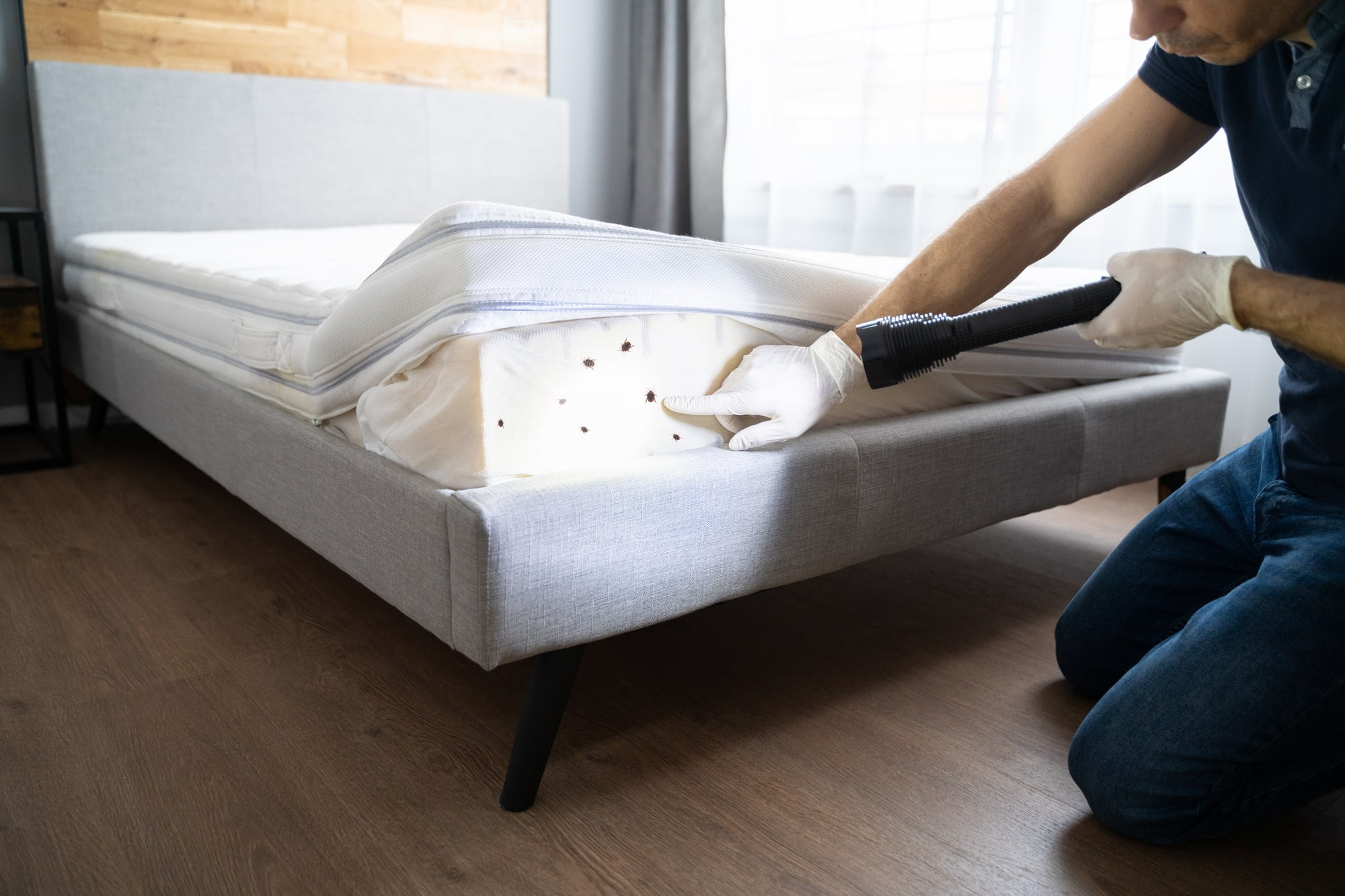Bed bugs are insects that can quickly make life hell. Feeding on blood, they cause unpleasant stings and invade the whole house. A number of factors can contribute to their spread, and getting rid of them can be time-consuming and costly. Find out how to recognize them and prevent them from entering your home after a trip.
How to recognize bed bugs?
Bed bugs are dreaded nocturnal pests. They have distinctive features that make them identifiable. First of all, they are visible to the naked eye. Adults are generally brown in color. But their hue can vary from red to dark brown once they’ve fed on blood. They are oval in shape and measure between 4 and 7 millimetres in length. Unlike some pests, they do not have the ability to jump or fly.
An intriguing aspect of their biology is their lifespan. Adult bed bugs live an average of 5 to 6 months. Nevertheless, they are able to stay alive for over a year without feeding. To achieve this, they enter a state of dormancy. This makes them particularly formidable.
The eggs of these parasites also have unique characteristics. They are whitish in color and the size of a pinhead. Bed bugs lay their eggs in clusters and fix them in small, tight spaces. These eggs generally hatch after 10 to 14 days.
How do bedbugs get into our homes?
Unable to fly or jump, bed bugs enter a home, usually by being carried in without our knowledge.
Clinging to you
Bed bugs can easily snag and hide in clothing folds, pockets, hoods, or even sneak into shoes, handbags, scarves, and other personal belongings.
By slipping into your luggage
Travel, whether for business or pleasure, can put your home at risk. Bed bugs can take advantage of this opportunity to get into your luggage. For example, by placing an open suitcase on the floor of a hotel room or on an old sofa, you could inadvertently welcome them. Once inside your luggage, they’ll travel discreetly to your home.
Via second-hand furniture
A sofa, an armchair or a simple office chair can be the nest of bedbugs. If you buy this kind of furniture second-hand, you run the risk of it containing any. Cleaning by dealers does not guarantee the elimination of these pests.
How can you detect the presence of bedbugs in your home?
The presence of bedbugs in the home can often go unnoticed. Nevertheless, there are several telltale signs to look out for in order to detect a potential infestation.
The presence of pimples on the body
Bedbug bites usually cause pimples on the skin. They may appear a few hours after the sting. They are often arranged in rows or groups. Skin reaction varies from person to person, which means that some people may show no reaction at all, while others may develop more severe irritation.
Bedbug detection with the naked eye
Although bed bugs are generally nocturnal, it’s not impossible to see them moving around in broad daylight. If this is the case, you should know that the infestation is often already well advanced. Young bugs are light in color. They are therefore difficult to detect in the early stages of infestation. Adults, on the other hand, have a more distinctive brown color.
Traces of droppings
Bedbug droppings consist mainly of digested blood. They are black and liquid when freshly emitted. On low-absorbency surfaces, they can spread out to form a small cluster resembling an ink stain.
Blood traces
When a bedbug feeds too much, it leaves a trail of blood behind. This explains the stains on the sheets and bed. You may also crush them during the night without realizing it. In the latter case, you should also see bedbug bodies near the spots.
Eggs and moults
Bedbug eggs are about 1 mm long and whitish in color. They are generally laid in small clusters of 5 to 15 units. They are generally glued to textiles. As the juveniles pass from one stage to another, they moult, leaving behind their old skins. If you look carefully under the mattress or between the upholstery of the sofa, you should see some.
How can you avoid infesting your home after returning from a trip?
Avoiding a bedbug infestation is essential to preserving the tranquillity of your home. Here are some tips to follow during and after your travels to minimize the risk of introducing these parasites into your home.
Reflexes to adopt during your trip
When you arrive at a hotel room or rental property, carefully inspect beds and box springs for signs of infestation. Look for traces of bedbug droppings, which appear as small black spots, similar to ink stains.
Be careful how you handle your luggage. Avoid placing them on or under the bed. Don’t unpack all your belongings and clothes in the bedroom cupboards. Place your suitcases as far away as possible from sleeping areas, such as beds. Remember that bed bugs can travel with you thanks to human scent, which makes them a risk.
Reflexes to adopt when returning from a trip
Before entering your house or apartment, leave your luggage, suitcases and travel bags outside. Then carefully pack your clothes in well-closed garbage bags.
Wash all garments at a temperature of at least 60°C. Bedbug eggs cannot survive temperatures in excess of 50°C.
It’s essential to maintain this temperature to kill bedbug eggs, as they don’t survive above 50 degrees. For garments that cannot be washed at high temperatures, you can place them in the freezer at -20°C for a minimum of three days.
After handling bags of potentially infested clothing, vacuum your entire home, including areas where you’ve stored your luggage. Don’t forget to clean your suitcases, for example, by steaming them.
If bedbug bites appear in the days or weeks following your return, contact a pest control specialist like us immediately. We can schedule a rapid response to limit the extent of the infestation.

